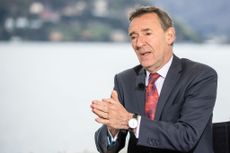Global Economy
The latest news, updates and opinions on Global Economy from the expert team here at MoneyWeek
-

Will the internet break – and can we protect it?
The internet is a delicate global physical and digital network that can easily be paralysed. Why is that, and what can be done to bolster its defences?
By Simon Wilson Published
-

Canadian stocks for a new era of deglobalisation
Greg Eckel, portfolio manager at Canadian General Investments, selects three Canadian stocks
By Greg Eckel Published
-

Jim O’Neill on nearly 25 years of the BRICS
Jim O’Neill, who coined the acronym BRICS in 2001, tells MoneyWeek how the group is progressing
By Dr Matthew Partridge Published
-

'My predictions for the next 25 years'
Opinion What will the world look like when MoneyWeek celebrates its 50th birthday? Matthew Lynn shares his predictions
By Matthew Lynn Published
Opinion -

Central banks have evolved. Are they still fit for purpose?
The rise to power and dominance of the central banks has been a key theme in MoneyWeek in its 25 years. Has their rule been benign?
By Simon Wilson Published
-

LVMH is set to prosper as the wealthy start shopping again
After two years of uncertainty, the outlook for LVMH is starting to improve. Is now a good time to add the luxury-goods purveyor to your portfolio?
By Rupert Hargreaves Published
-

US-China trade talks: “amazing” meeting yields tariff truce
Trump hailed a “12/10” meeting with China’s Xi Jinping on Thursday. But despite progress on rare earths and tariffs, details about TikTok’s ownership are still unclear.
By Dan McEvoy Last updated
-

Lessons from Nobel Prize winners in economics on how to nurture a culture of growth
The Nobel Prize in economics went to three thinkers who show us why economies grow and how we can help them do so. Governments would be wise to heed the lessons
By Simon Wilson Published
-

Debasing Wall Street's new debasement trade idea
The debasement trade is a catchy and plausible idea, but there’s no sign that markets are alarmed, says Cris Sholto Heaton
By Cris Sholto Heaton Published
